Hey there! In this article, I’m going to introduce you to the eleven types of black birds that can be found in New Jersey.
From the sleek and shiny Common Grackle to the striking and elusive Rusty Blackbird, we’ll take a look at each species and learn some interesting facts about them.
Whether you’re a bird enthusiast or just curious about the black birds you see around your neighborhood, keep reading to discover the wonderful world of New Jersey’s black birds!
| Image | Name |
|---|---|
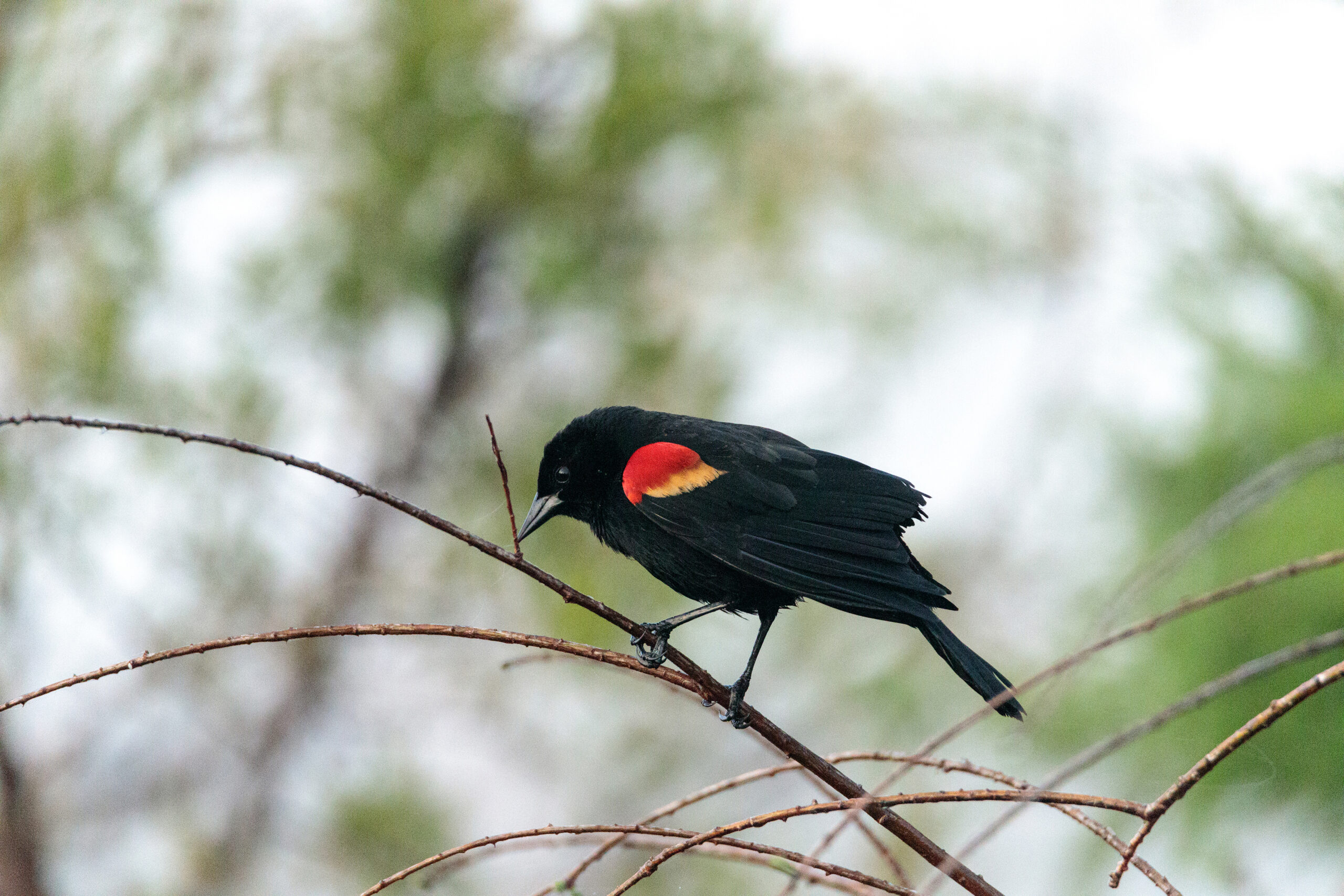 | Red-Winged Blackbird |
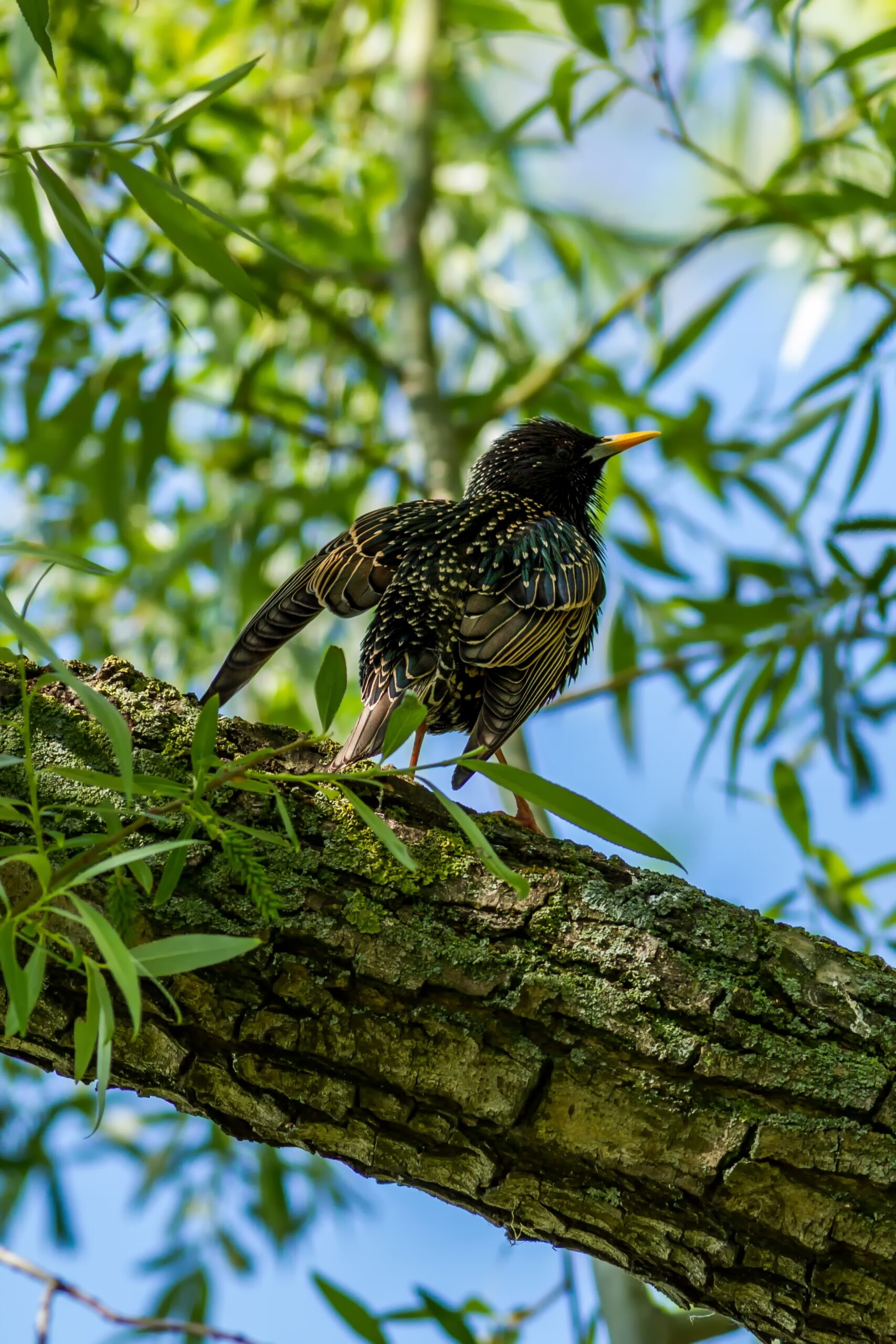 | European Starling |
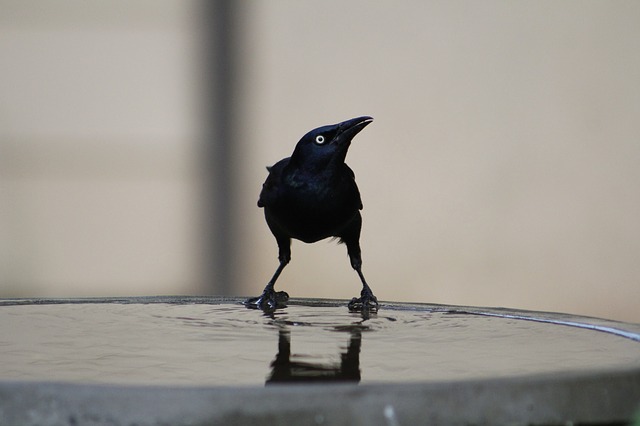 | Common Grackle |
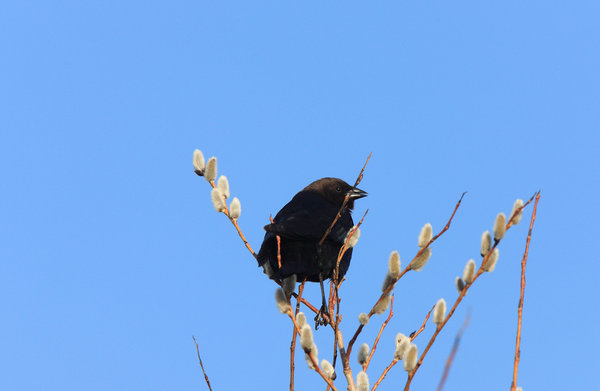 | Brown-Headed Cowbird |
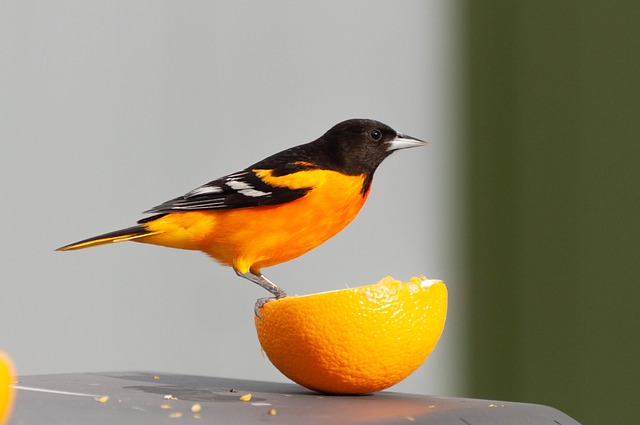 | Baltimore Oriole |
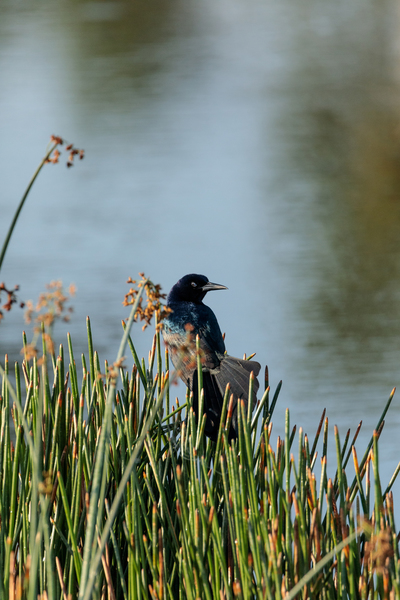 | Boat-tailed Grackle |
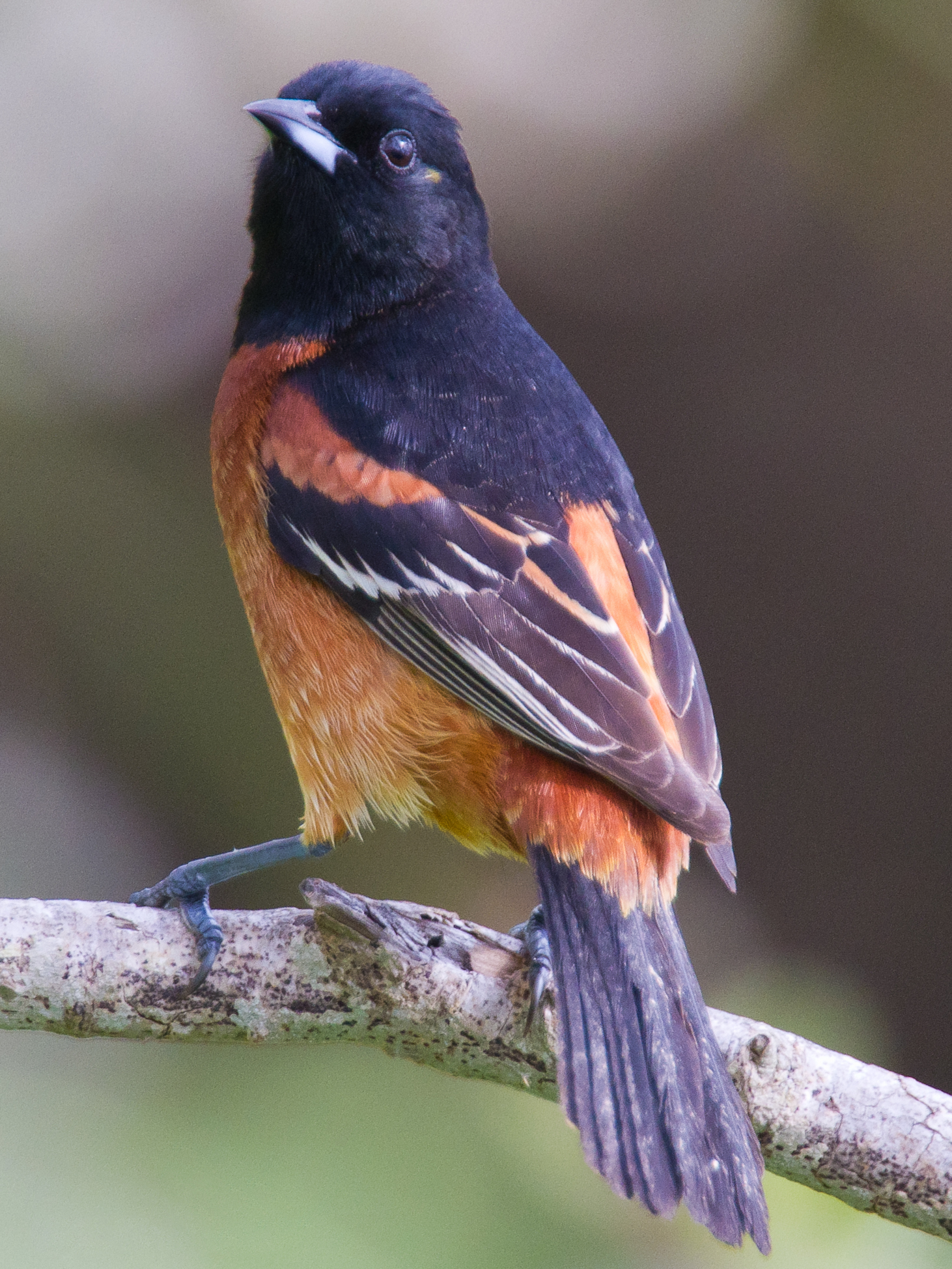 | Orchard Oriole |
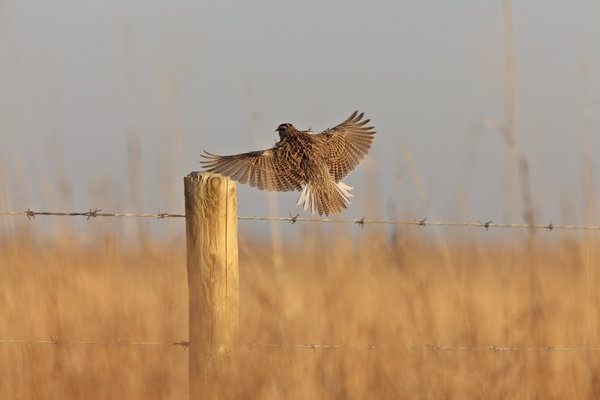 | Bobolink |
 | Eastern Meadowlark |
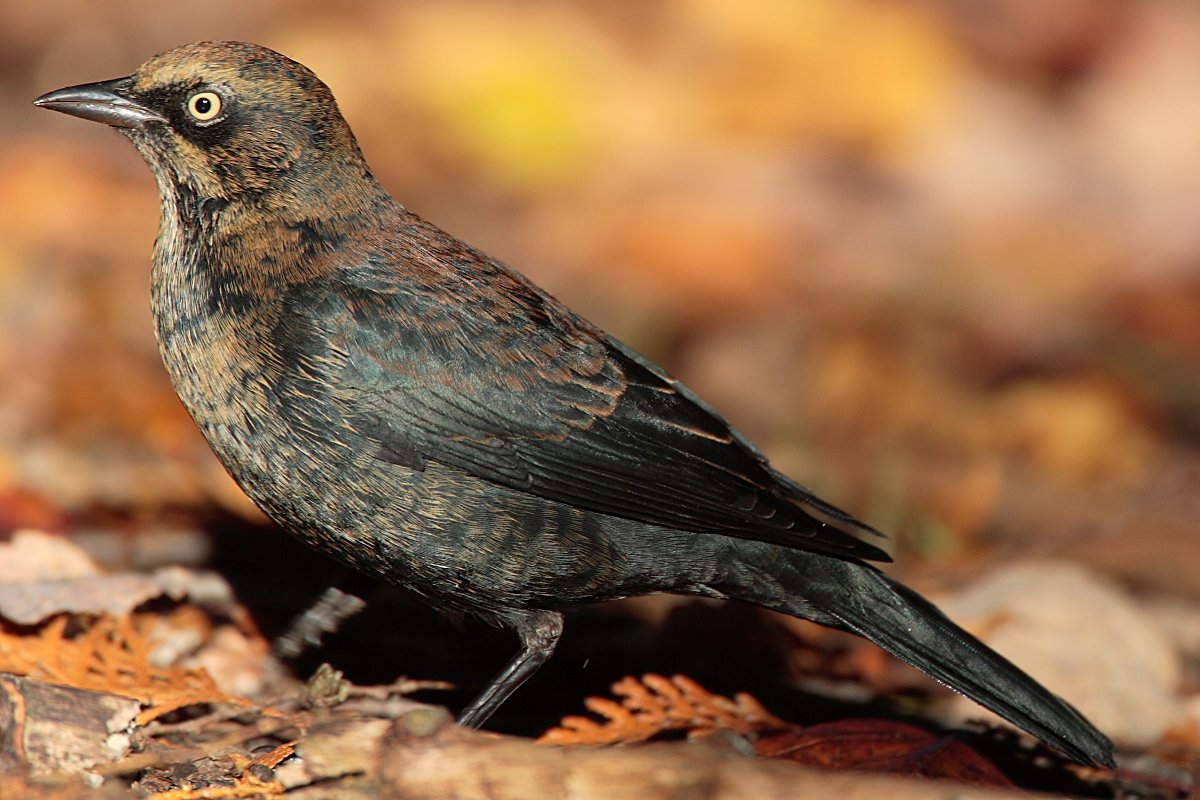 | Rusty Blackbird |
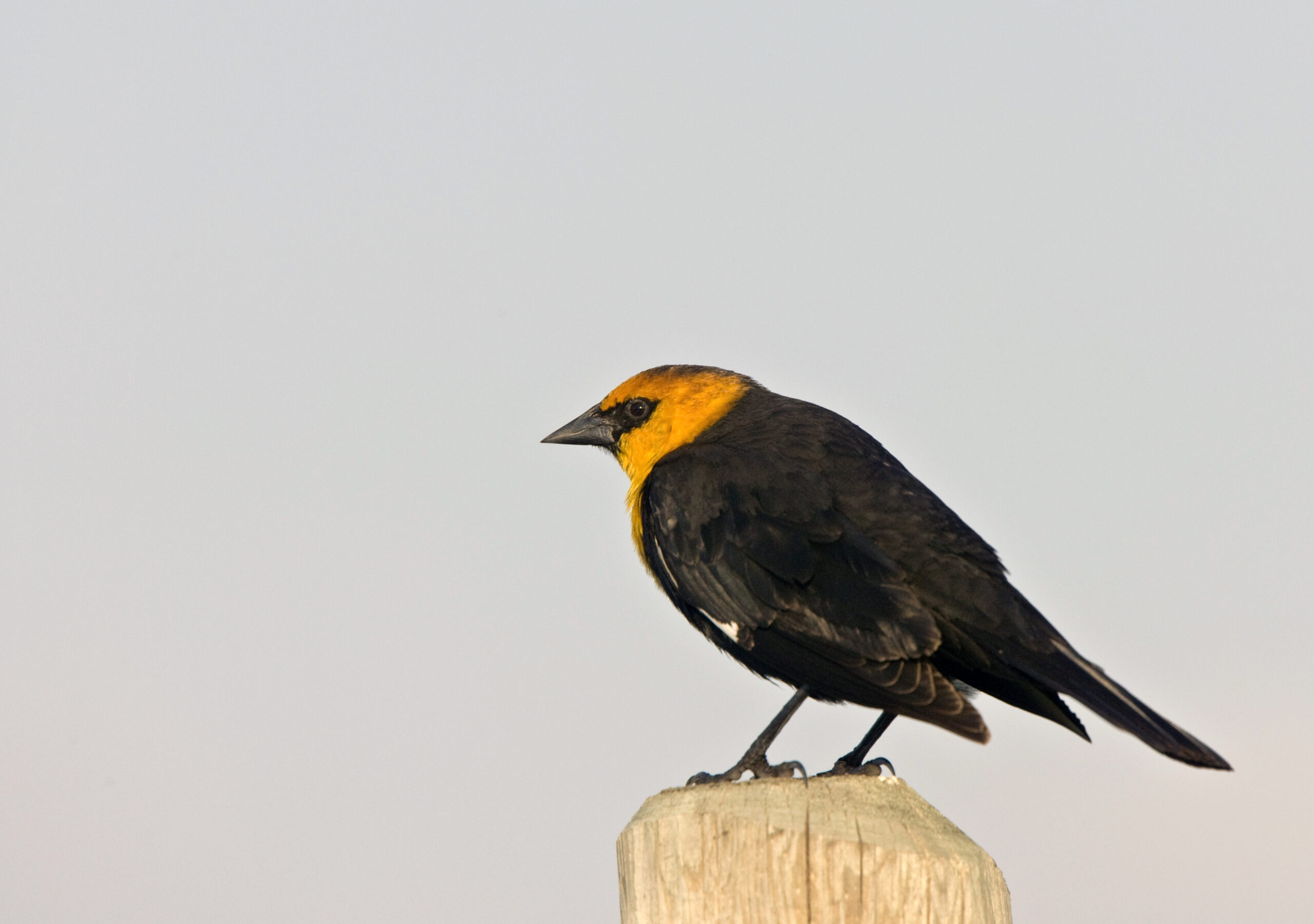 | Yellow-Headed Blackbird |
Types of Black Birds in New Jersey
1. Red-Winged Blackbird
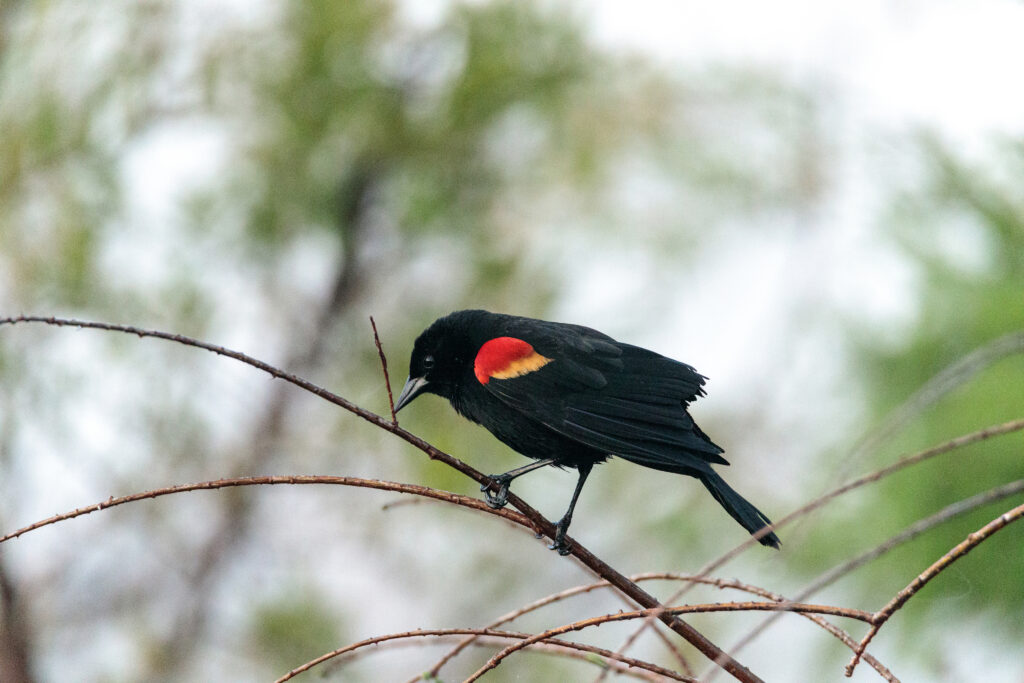
The red-winged blackbird is the most often observed species of blackbird throughout New Jersey during the summertime and the second most prevalent throughout the winter season.
Although most red-winged blackbirds go south for the wintertime, a small number will stick around.
Because of their striking reddish-orange spots on their otherwise black wings, even the most beginner birdwatchers will have no trouble seeing and identifying male red-winged blackbirds.
Female birds have become less distinctive than males, making identification a little more challenging.
The female red-winged blackbird has brown streaks all over its body.
2. European Starling
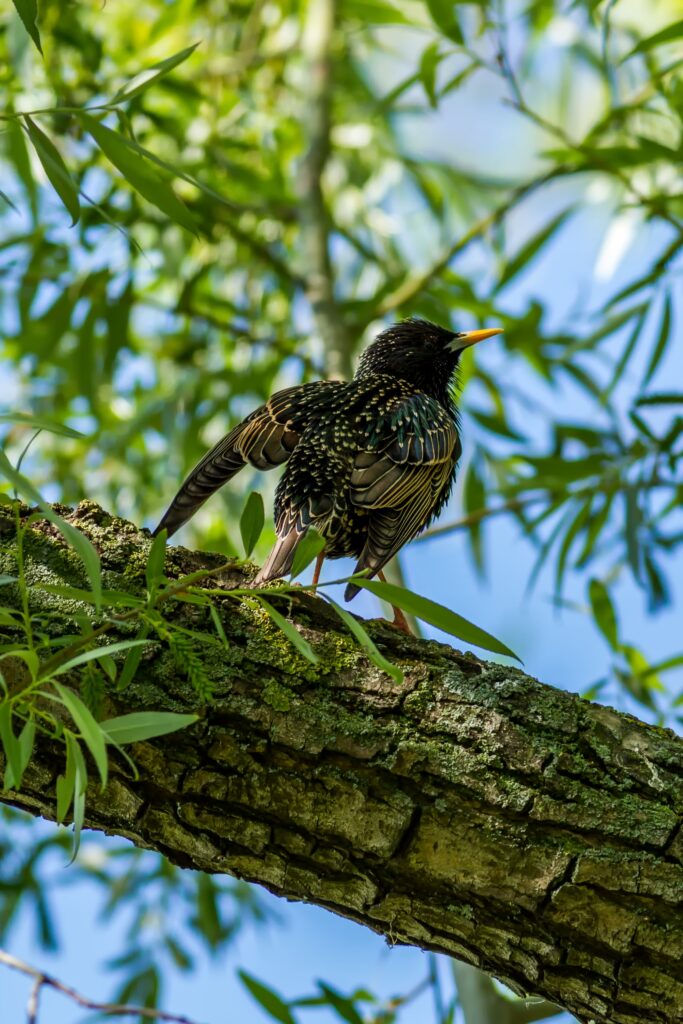
The European starling is the sole non-native bird on our listing, but it’s exquisite singing and widespread distribution have made it among North America’s most beloved exotics.
In New Jersey, European starlings are a popular sight, especially in the summer, although they are year-round residents.
From far away, the birds—both male and female—may seem to be ordinary.
Close inspection reveals greenish, purple, and blue flashes in the feathers of European starlings.
When European starlings congregate in the hundreds or thousands and fly in unison, the sight is breathtaking.
Nonetheless, there are many who see European starlings as a nuisance.
3. Common Grackle

The common grackle is a bird that is very close to the brink of extinction.
Yet, during the summer months across New Jersey, they seem to be the second most often seen species of the blackbird.
Although the vast majority of this species heads south for the wintertime, a few individuals choose to stay all year round, making them the third most often sighted species in the north during the colder months.
These blackbirds stand a little higher and have longer tails than other varieties.
The males have somewhat glossier black feathers than the females, although both sexes have glossy feathers.
4. Brown-Headed Cowbird

Throughout the summertime, New Jersey is a hotspot for sightings of the brown-headed cowbird.
While their arrival window spans February to August, most of these birds will leave in the summer’s final month.
Some brown-headed cowbirds, however, may winter in the state, thus, it is possible to see them at any time of the year.
Males may be recognized easily because of their shiny black bodies and brown head.
The females are less striking than the males because their plumage is streaked with brown and gray.
5. Baltimore Oriole

Summertime in New Jersey is home to five different species of blackbirds, with Baltimore orioles ranking as the fifth most often seen.
The Baltimore oriole migrates to the state during the month of May for the mating season and leaves in September.
Sometimes, although very rarely, in the winter, Baltimore orioles have been seen here.
Male Baltimore Orioles may be identified by their bright orange bodies and glossy black plumage, as well as their black wings containing white wing bands.
Females are characterized by their grayish-brown wings and brown, yellow body with yellow spots.
The size of these blackbirds is comparable to that of a robin.
6. Boat-tailed Grackle

While boat-tailed grackles are uncommon statewide, they may be seen year-round in the state’s southern regions, notably near and around the shore, with somewhat higher sighting frequencies in the summertime.
The male Boat-tailed grackle is huge, glossy black, and has an especially long tail and legs.
The females of this species are brown in color and are around the size of medium-sized blackbirds, which is to say that they are approximately half the proportions of the males of the species.
7. Orchard Oriole
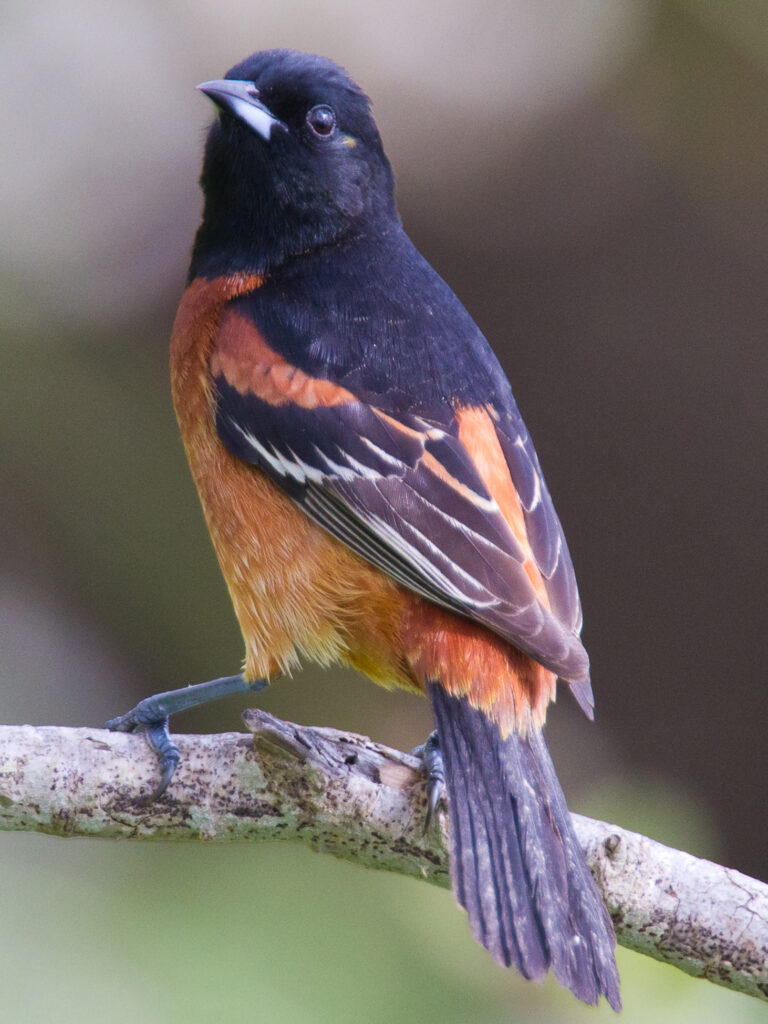
The summer months in New Jersey are the prime breeding time for orchard orioles.
They might arrive as soon as April and stay until late October or early November.
Although you could be lucky enough to observe an orchard oriole at any time, the optimum time for this to occur is between May and August.
Orchard orioles may be seen around hummingbird feeders or in gardens, where they feast on berries and other fruits.
Male and female members of this species of bird have significantly different appearances.
The females have greenish-yellow bodies and brown wings containing white wing bands.
The males are medium-sized blackbirds with black crowns and backs and a rusty underside.
8. Bobolink

During the autumn and spring migratory seasons, only then can residents of New Jersey get to view bobolinks.
In the spring, they might well be observed flying north, but in the fall, as they make their way south toward their wintering habitats, they are more likely to be spotted.
With their white backs and black stomachs, male bobolinks in nesting feathers stand out from the crowd.
Both the male and female birds that aren’t breeding seem less striking when they’re not actively courting.
9. Eastern Meadowlark
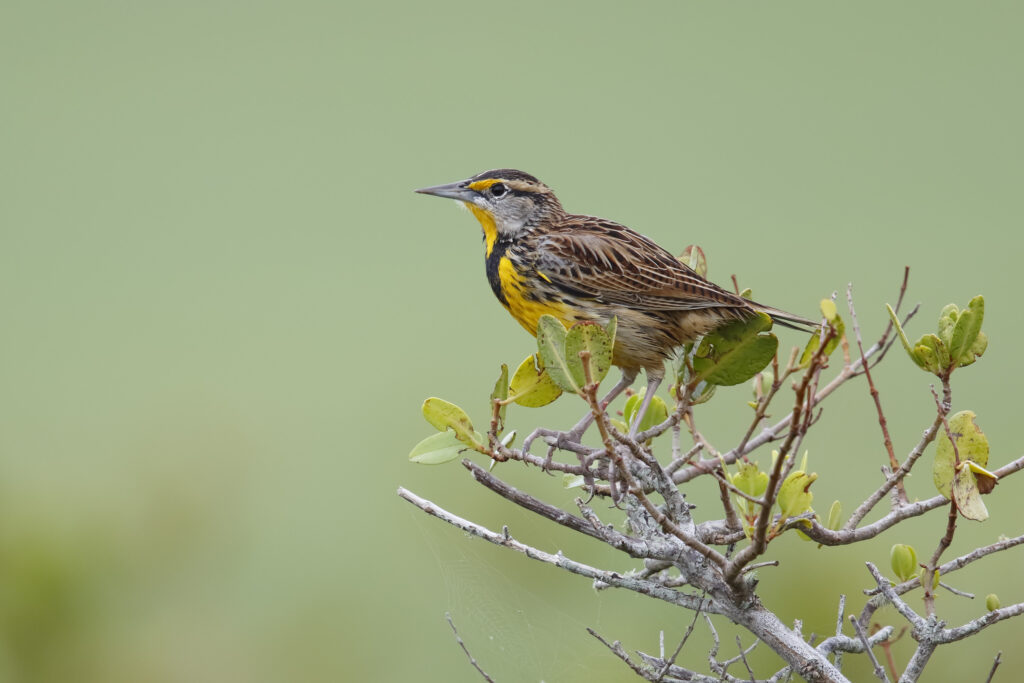
The Eastern Meadowlark is a species that is very close to extinction.
They are, however, sometimes observed in the Garden State and are thought to remain there year-round.
These blackbirds, albeit average in size, have beautiful songs.
Yellow on the underbelly, with a black stripe across the middle, and brown and black on the back.
And their melodious tunes reminiscent of a flute are well-known as well.
10. Rusty Blackbird
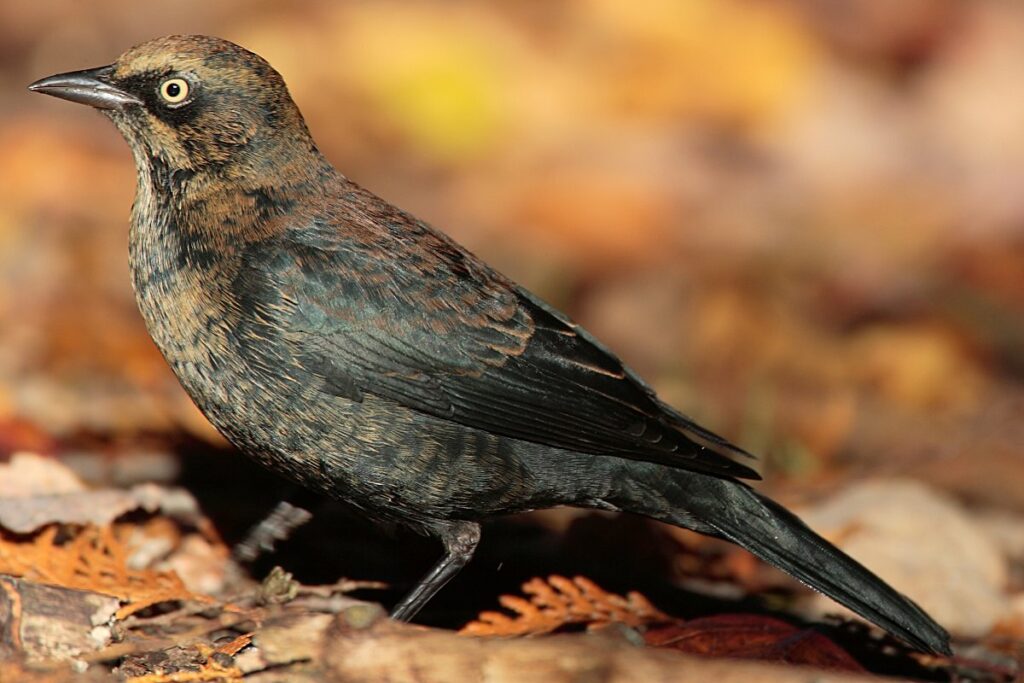
Although the rusty blackbird can be spotted occasionally here in the winter season, its population has decreased dramatically over the last several decades, making it a species of high conservation concern.
The rusty blackbird often shows here in August, and it may stay until as late as May.
Nevertheless, seeing a rusty blackbird in this area is easiest between the months of October and April.
Male rusty blackbirds spending time in the state will have lost their shiny black breeding feathers and instead seem ‘rusty’.
Similar to the males, females have a rusty hue, but they are otherwise grayish-brown with deeper eye and crown patterns.
11. Yellow-Headed Blackbird
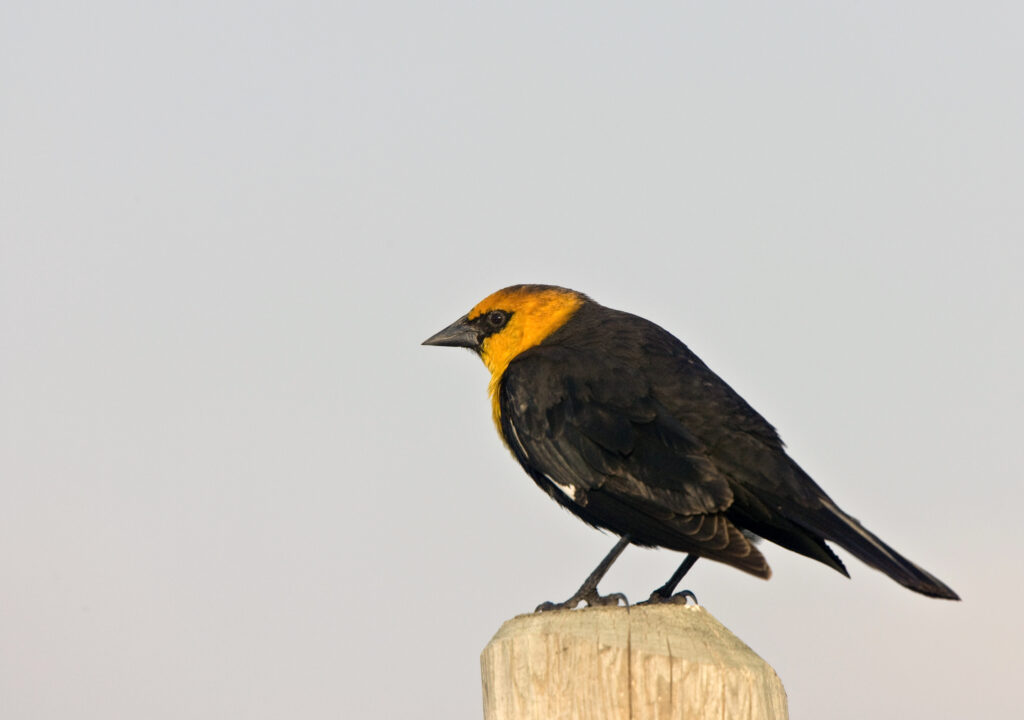
Seldom do New Jersey residents get a glimpse of a yellow-headed blackbird.
Yellow-headed blackbirds, on the other hand, are officially classified as a resident species in the state and are sometimes seen all through the year.
The males shine like jets with their all-black bodies and black wings, white wing bands, and brilliant yellow heads.
Female birds have brown bodies and somewhat less vibrant heads.
Conclusion
In conclusion, New Jersey is home to a diverse range of black bird species that offer a stunning visual display and fascinating behaviors for birdwatching enthusiasts and nature lovers alike.
From the Common Grackle’s impressive vocalizations to the Red-winged Blackbird’s striking red shoulder patches, each species has its unique characteristics that make them a joy to observe.
While some species, such as the Rusty Blackbird and the Yellow-headed Blackbird, are rare sightings in New Jersey, others like the American Crow and the European Starling are ubiquitous and can be seen throughout the state.
Whether you’re watching them gather in large flocks or admiring them as they forage for food in your backyard, there’s no denying the beauty and charm of these remarkable creatures.
So next time you’re out exploring the Garden State, keep an eye out for these amazing black birds and appreciate the diversity of wildlife that surrounds us.
FAQ
When is the best time to see black birds in New Jersey?
The best time to see black birds in New Jersey is during the spring and summer months, when many species are breeding and nesting. However, some species can also be seen during the fall and winter months.
Where can I see black birds in New Jersey?
Black birds can be found in many different habitats throughout New Jersey, including forests, wetlands, fields, and suburban areas. Some of the best places to see them include state parks, wildlife refuges, and nature preserves.
What do black birds eat?
Black birds are primarily omnivores and eat a variety of foods, including insects, seeds, fruit, and small animals like mice and frogs.
Do black birds migrate?
Some black bird species in New Jersey, such as the Rusty Blackbird and Yellow-headed Blackbird, are migratory and only visit the state during certain times of the year. Other species, like the American Crow and European Starling, are year-round residents.
Are black birds beneficial to the environment?
Yes, black birds play an important role in many ecosystems by helping to control insect populations and dispersing seeds. However, some species can also cause damage to crops and other human-made structures.
Last Updated on May 7, 2023 by Lily Aldrin

Do you know what type of bird this is? Black and gray
Black beak
Mottled color not smooth consistent colors
Smaller than a robin bigger than a sparrow
Seeing them now in South Jersey
They may be migrating